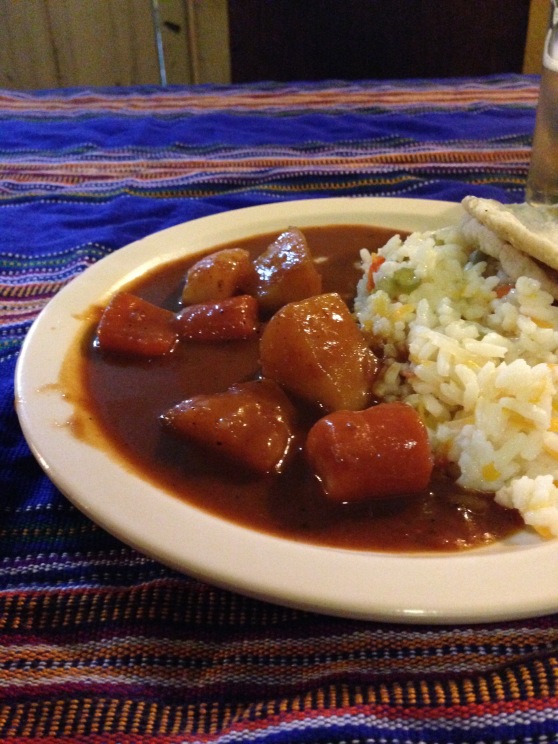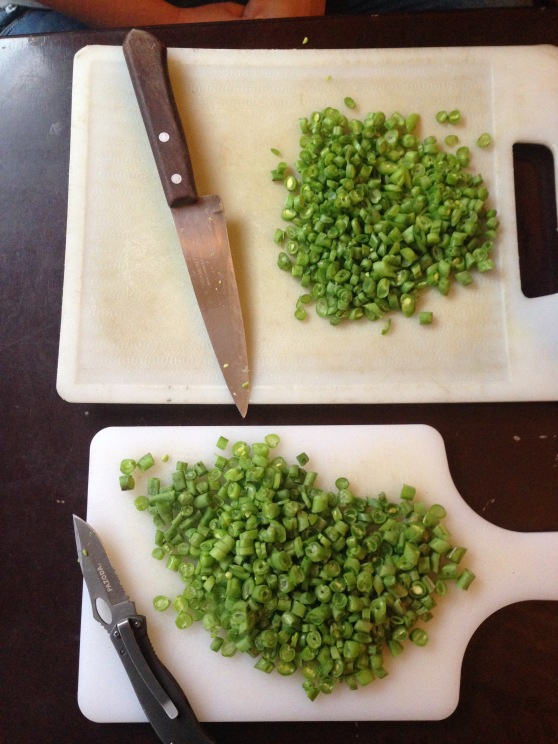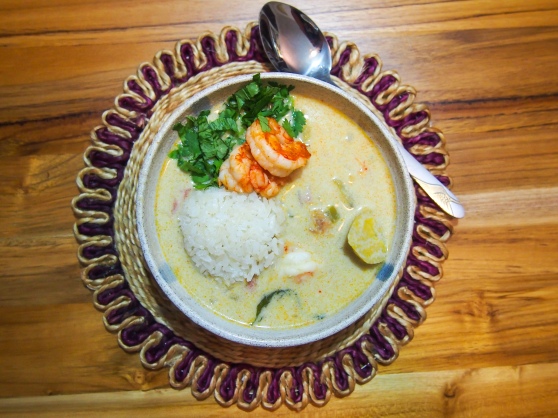
Somehow we ended up with a table-full of green plantains last night, which it turns out are NOT the ones you make yummy sweet fried plantains with. Is that common knowledge? I felt totally uninformed and unworthy of my food blogger status. Well, now I know (and so do you!).
The internet told me I could deep fry them, tostones style, or make a dough out of them and stuff them with meat or whatever, bolo style. All options sounded fine, but in a eureka moment, I remembered cooking with green plantains once (I think they were green bananas then, but I believe they can be used fairly interchangeably), at a very steamy cooking class in Livingston, Guatemala.
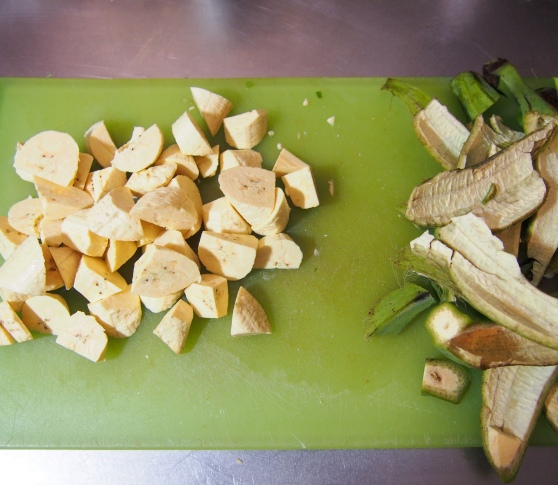
I got out my journal, go me for being obsessive about notebooking, and immediately found the recipe I jotted down after the class. It was a very simple affair, made of what was local and available, namely lots of coconuts and fresh fish, with very little else.
Livingston, Guatemala is totally different from the rest of the country. It’s a Garífuna enclave on the Carribean coast, where it is steamy, humid, and damn tropical. Almost all food has to be brought in by boat and is hence pretty pricey. Its budding tourism industry is one of the prime sources of income for the area, but there’s not much to do in the oppressive heat — despite being on the coast, the only nice beach is accessible only by boat and the hostel options are all of the dreaded “party” variety, where invariably some huge Australian dude has slept all day and now has 40s of beer taped to his hands and is challenging other dudes into pull-up contests. #yolo #traveltolearnaboutothercultures #ohmy.
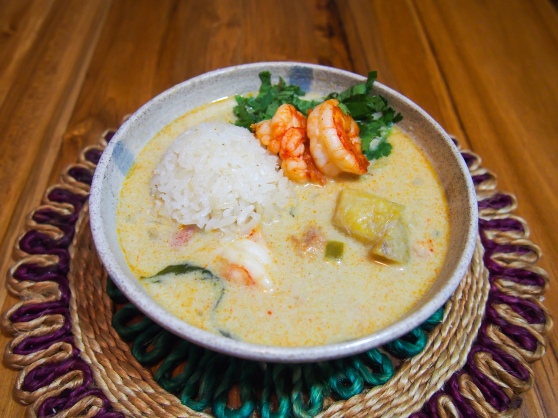
Some enterprising folks at Rasta Mesa started a cooking class to teach us bumblers how to make the traditional and ubiquitous soup of the region, tapado. It was a laid-back, steamy afternoon, with children running around and intermittently (and impressively) playing drums. “Class” was in the loosest sense of the word — I got the feeling the instructors were just making themselves dinner and we were around to help chop some vegetables and maybe babysit. Which was totally fine with me. The experience was only tainted by the one hostelbro who decided to get over his hangover, leave the hostel for the first time, accompany us to class, and flirt with all the women present. Despite his presence, it was a tranquil and delicious afternoon that I’m glad has come back to me.
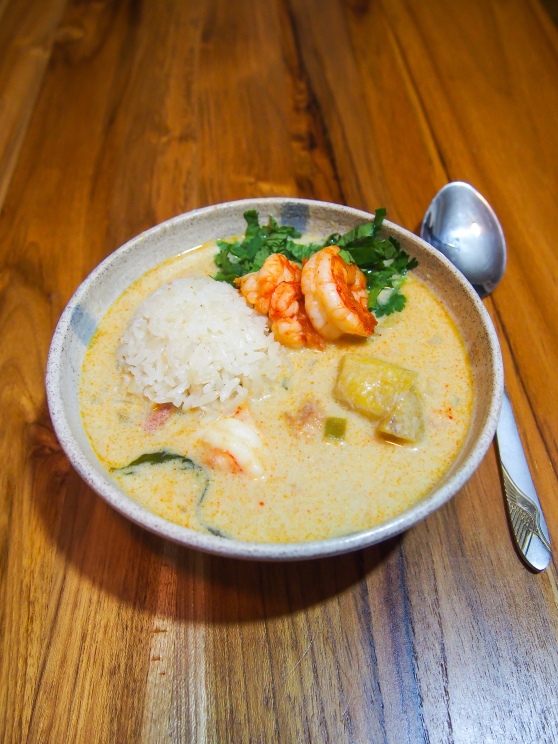 Note on recipe: When we made this in Guatemala, we used small white fish, hacked into thirds, with their bones and eyeballs still intact. The versions I saw around town had all sorts of seafood; I decided to use just shrimp but use whatever you prefer. For a vegan meal, you could use roasted sweet potatoes or green pepper chunks instead of fish. If you don’t have access to green plantains, don’t use bananas or yellow plantains, they’re too sweet and soft. The green variety is not sweet at all — it’s very starchy. Try subbing potatoes or yuca.
Note on recipe: When we made this in Guatemala, we used small white fish, hacked into thirds, with their bones and eyeballs still intact. The versions I saw around town had all sorts of seafood; I decided to use just shrimp but use whatever you prefer. For a vegan meal, you could use roasted sweet potatoes or green pepper chunks instead of fish. If you don’t have access to green plantains, don’t use bananas or yellow plantains, they’re too sweet and soft. The green variety is not sweet at all — it’s very starchy. Try subbing potatoes or yuca.
one year ago: rice noodle salad with carrot-ginger dressing and unstuffed eggplant with yogurt sauce
two years ago: kale Caesar salad and black bean mango corn salad
three years ago: easy rhubarb cake and roasted beets + greens with mint yogurt sauce
more Guatemalan food: rellenitos de plátano (for when you need to get rid of yellow plantains) and quichon de verduras (Mayan veggie stew)
Tapado
adapted from cooking class at Rasta Mesa
2 tablespoons olive oil
½ pound raw shrimp (mine were tail-free but either way is fine)
Pinch each of: garlic powder, granulated onion powder, cayenne
Salt
1 onion, diced
2 medium tomatoes, chopped (save the juices)
1 jalapeño, diced
2 cans full fat coconut milk
Small handful fresh basil leaves
2 green plantains, peeled and in bite-sized chunks
Juice from ½ a lime
Chopped basil and/or cilantro, to serve (optional, but nice)
Cooked white rice, to serve
Heat a big saute pan (for which you have a lid) over a high heat. Toss shrimp in a bowl with 1 tablespoon of oil, garlic powder, onion powder, cayenne, and salt. Add to very hot pan and cook on each side for just 2-3 minutes, or until they just turn pink. Remove from pan and set aside.
Add 1 tablespoon oil to same pan. Lower to medium heat. Add onion and a bit of salt, and scrape up any bits left by the shrimp. Cook onion for 3-4 minutes, or until it’s just turning translucent. Add tomatoes and their juices and jalapeño. Cook for another 10 minutes or so, stirring occasionally, until the onion and tomato have broken down and become somewhat jammy.
Add both cans of coconut milk, one can’s-worth of water, small handful whole basil leaves, the green plantains, and bunch of salt. Bring to a boil, then partially cover and reduce to a simmer. Simmer for about 20 minutes, or until plantains are totally cooked. Partially mash some of the plantains with the back of a wooden spoon to thicken the soup. Add lime juice and shrimp — cook for another 2 minutes or so until shrimp are reheated.
To serve, ladle into a bowl, add a spoonful of white rice, and sprinkle with fresh basil and cilantro.





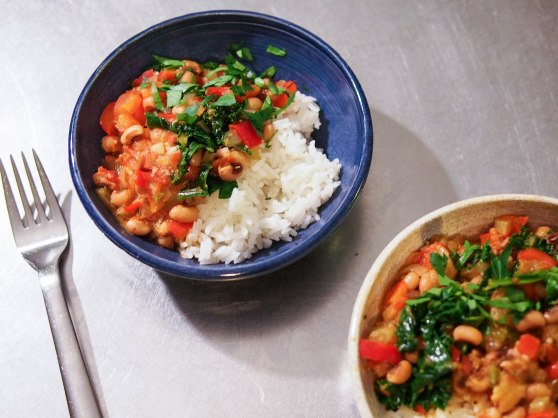
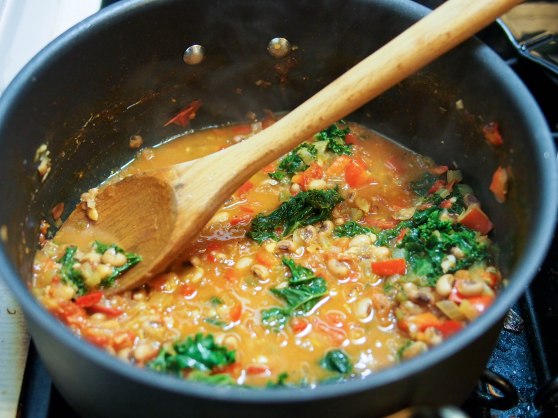
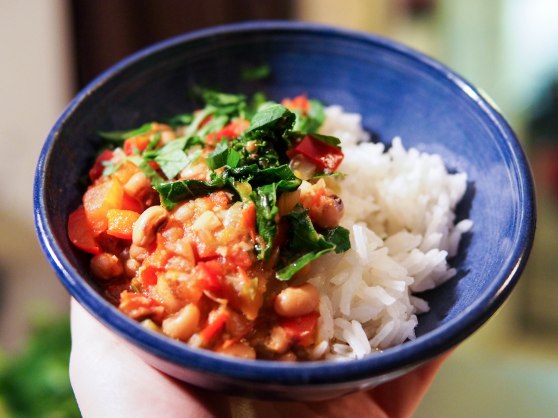
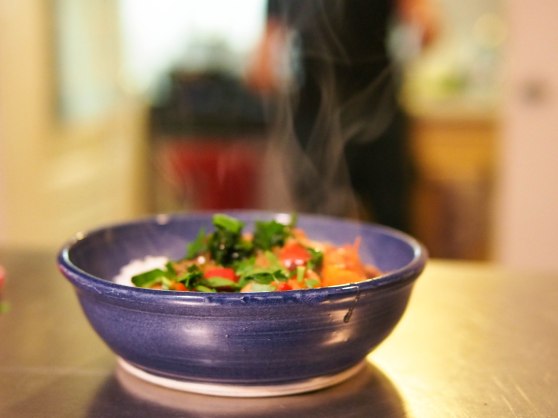
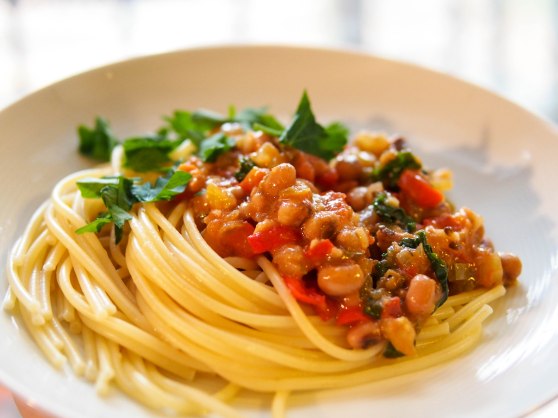
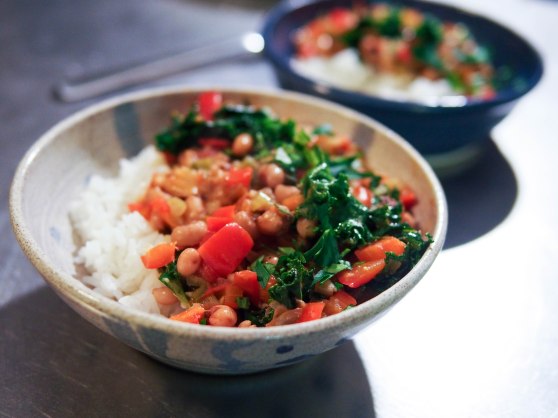
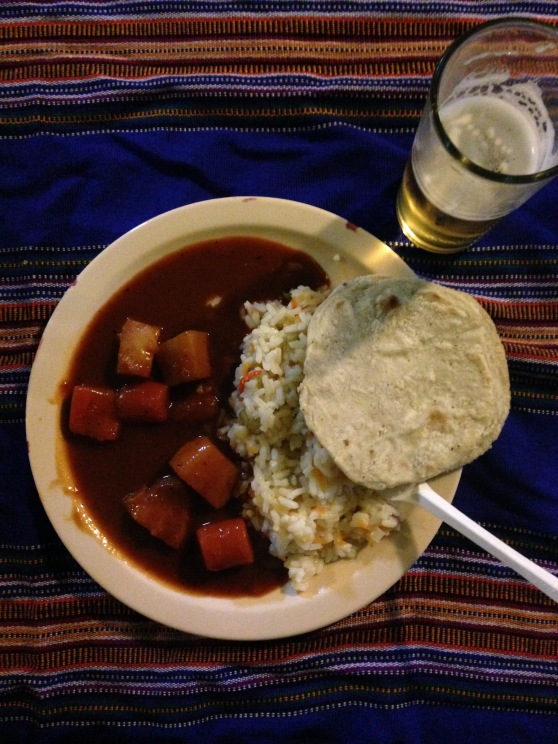
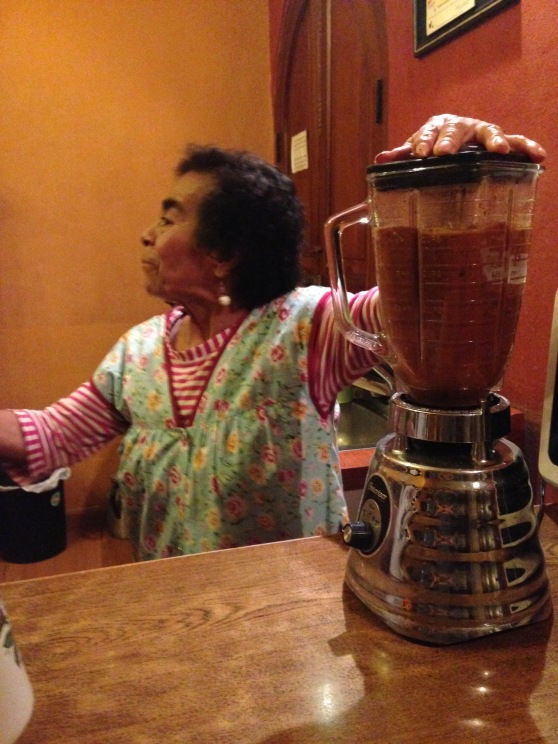
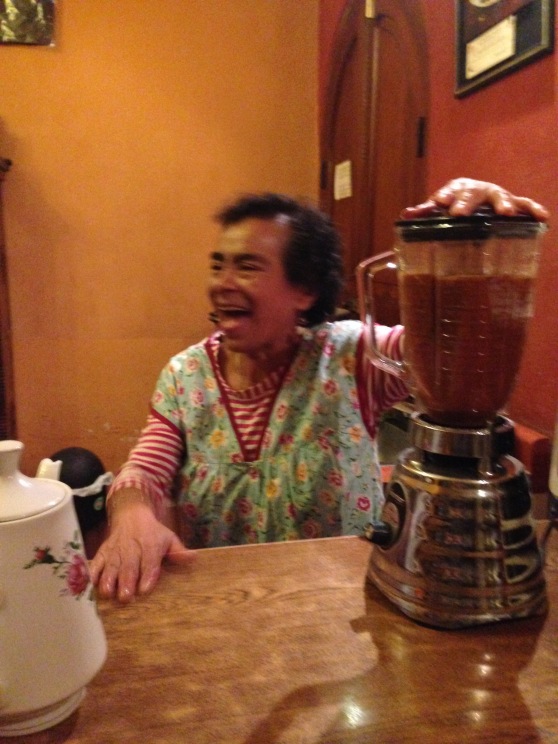
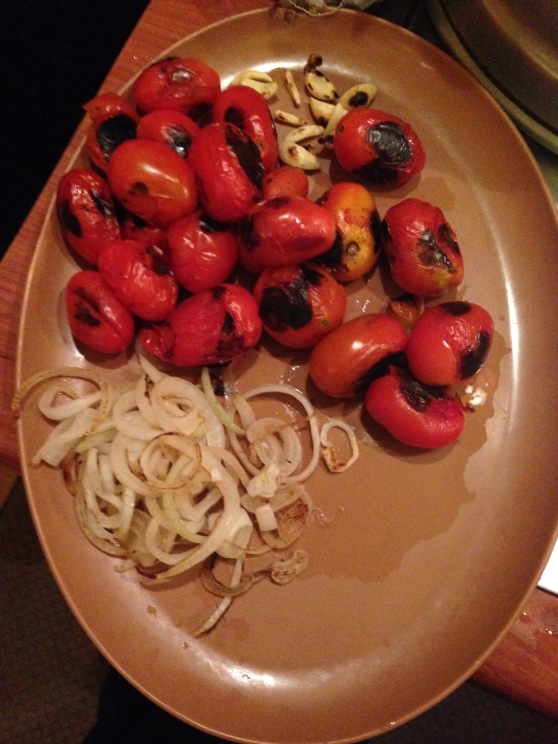
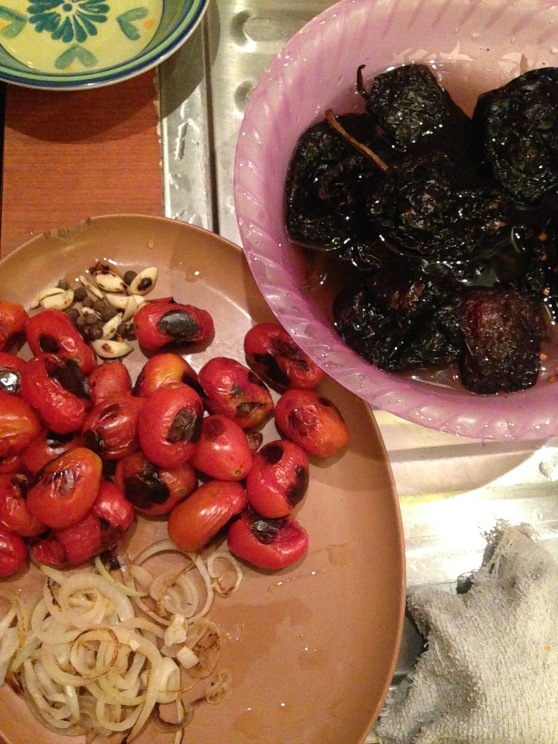 The recipe below is written exactly how Oti (with our ample slicing and dicing assistance) made it for our graduation dinner last week. No tweaks or improvements. It was certainly tasty — the sauce was good enough to eat with a spoon and I had a moment of annoyance that there were so many vegetarians this week and so not enough for seconds. It’s deep and musky and chile-heavy, with a slight spiciness cut by the tomatoes. I love that this is an extremely old and simple(ish) Mayan recipe. People have been making some form of quichon, which is only found in Quetzaltenango (a brief internet search showed surprisingly little internet evidence of this dish) for centuries (albeit with chicken). But I have some ideas about how I’ll update this recipe to give it just a bit more varied flavor — the chiles really do dominate — roasting the veggies instead of boiling, adding more garlic and perhaps a second type of chile, thickening the stew with something other than white bread mush, adding something green. But alas these will have to wait until the day of kitchen return. In the meantime, it will be vale la pena (worth it) to bring the smells and techniques of the Mayans into your kitchen, although I’m pretty sure they didn’t process white bread in a blender in the pre-Spaniard period. See Notes below recipe for ingredient tips.
The recipe below is written exactly how Oti (with our ample slicing and dicing assistance) made it for our graduation dinner last week. No tweaks or improvements. It was certainly tasty — the sauce was good enough to eat with a spoon and I had a moment of annoyance that there were so many vegetarians this week and so not enough for seconds. It’s deep and musky and chile-heavy, with a slight spiciness cut by the tomatoes. I love that this is an extremely old and simple(ish) Mayan recipe. People have been making some form of quichon, which is only found in Quetzaltenango (a brief internet search showed surprisingly little internet evidence of this dish) for centuries (albeit with chicken). But I have some ideas about how I’ll update this recipe to give it just a bit more varied flavor — the chiles really do dominate — roasting the veggies instead of boiling, adding more garlic and perhaps a second type of chile, thickening the stew with something other than white bread mush, adding something green. But alas these will have to wait until the day of kitchen return. In the meantime, it will be vale la pena (worth it) to bring the smells and techniques of the Mayans into your kitchen, although I’m pretty sure they didn’t process white bread in a blender in the pre-Spaniard period. See Notes below recipe for ingredient tips.